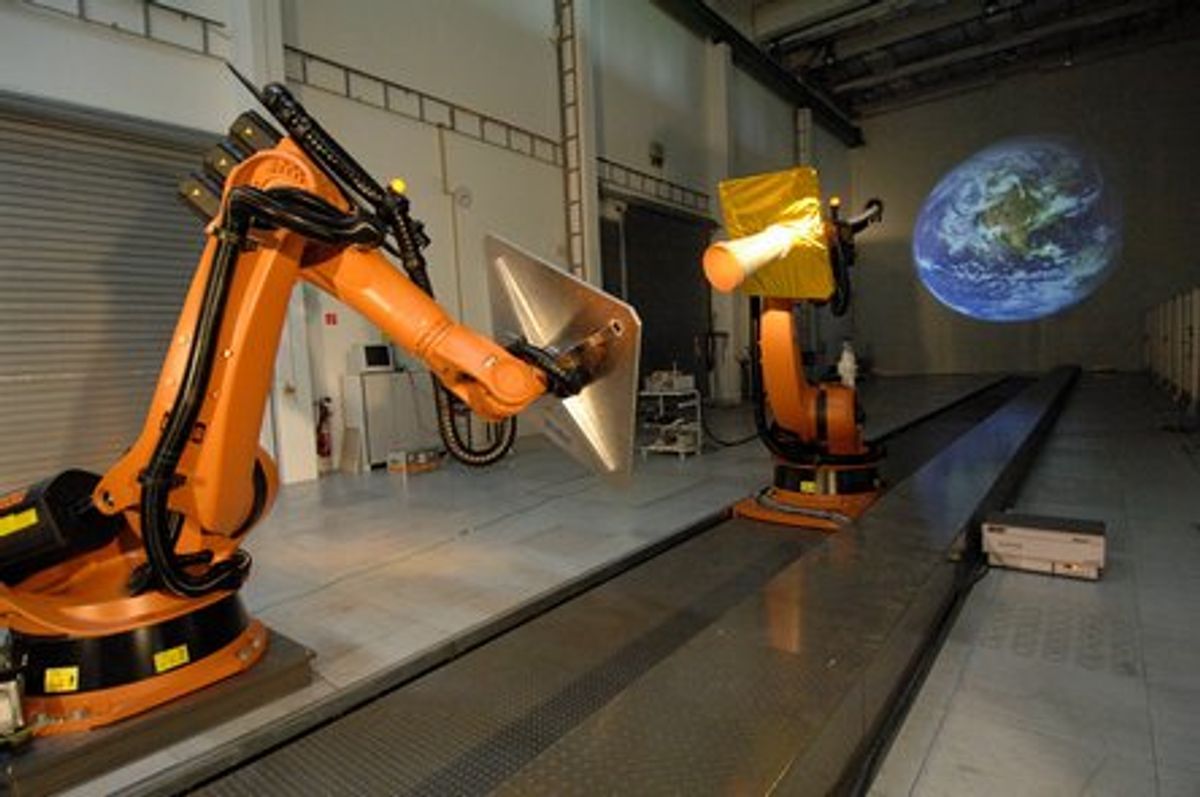Space robotics may appear to be a purely scientific endeavor -- brave little rovers exploring planets in search of life -- but it turns out there's a multi-million dollar market in space just waiting for the right kind of robot. This market is satellite servicing.
Geostationary communication satellites fire small thrusters to stay in orbit. When they run out of fuel (typically helium or hydrazine), or when a battery or gyroscope fails, these expensive satellites often have to be abandoned, becoming just another piece of space junk, even though their mechanical systems and electronics work fine.
Space agencies and companies around the world are developing robotic servicing systems (the United States demonstrated one such system in its Orbital Express mission), but putting these systems in space, docking them to satellites, and performing repairs remains a big challenge.
To address the problem, DLR (Germany's NASA equivalent) launched the European Proximity Operations Simulator, or EPOS, initiative. EPOS is a robotic facility designed to simulate on-orbit rendezvous, docking, and repair maneuvers. EPOS allows engineers to do computers simulations of a docking system with hardware in the loop.
For this project, DLR partnered with Robo-Technology, a small industrial robotic integrator that designed, built and programmed the EPOS hardware. Its main components are the two robots and the 25 meter linear track, which defines the working range. Both robots offer 6 degrees of freedom, so the two satellites can be positioned relative to each other, but also relative to instrumentation in the lab.
The simulation is as realistic as possible, so there is a sun simulator, the satellites "believe" to be in zero gravity and the high control bandwidth of 250 Hz enables the 1:1 simulation of contact dynamics during the capturing and docking. Even the capturing of a satellite with non-zero rotation can be simulated with EPOS using actuators which are remote-controlled as if a radio transmission from ground to space would take place.
DLR is using the system now to evaluate approach scenarios and test docking cameras using 1:1 satellite mock-ups. And just like on Earth for more common objects, things would be so much simpler for the roboticist if the design of the satellite had considered the robot limitations. But then, where would the fun be?
The video below explains the EPOS initiative (even if you don't understand German, it's fun to watch the robots in action).
Photo and video: DLR
Samuel Bouchard is a co-founder of Robotiq in Quebec City.




